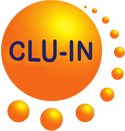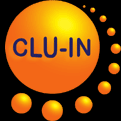Search Result
SORPTION OF PERFLUOROALKYL AND POLYFLUOROALKYL SUBSTANCES (PFASs) BY NATURAL AND ANTHROPOGENIC CARBONACEOUS SORBENTS
Zhi, Yue, Ph.D. dissertation, McGill University, Montreal, Quebec, Canada. 215 pp, 2017
Filed Under: Research
Filed Under: Research
Initially, interactions between commercial adsorbents with PFOA and PFOS were examined to investigate ways in which water treatment efficiency for PFASs might be improved. The study assessed (1) the sorption of PFOS and PFOA onto as-received and surface-modified carbonaceous adsorbents using single-solute batch sorption experiments and (2) identified the main carbon characteristics controlling PFAS uptake. Adsorbent surface chemistry played a greater role in controlling the extent of uptake than physical properties. High carbon surface basicity was closely linked to high PFOS and PFOA affinity. Prior to any modification of the carbon materials, synthetic polymer-based Ambersorb and activated carbon fibers were the most effective adsorbents. Surface modification, more so with ammonia gas treatment than with high-temperature thermal treatment, greatly improved sorption of PFOS and PFOA by wood-based carbons and activated carbon fibers. The research then focused on the role played by soil organic matter and pyrogenic carbonaceous materials in determining the transport potential of a range of perfluoroalkyl acids and their chemical precursors. http://digitool.library.mcgill.ca/R/-?func=dbin-jump-full¤t_base=GEN01&object_id=148488
Filed Under: Research
Filed Under: Research
Initially, interactions between commercial adsorbents with PFOA and PFOS were examined to investigate ways in which water treatment efficiency for PFASs might be improved. The study assessed (1) the sorption of PFOS and PFOA onto as-received and surface-modified carbonaceous adsorbents using single-solute batch sorption experiments and (2) identified the main carbon characteristics controlling PFAS uptake. Adsorbent surface chemistry played a greater role in controlling the extent of uptake than physical properties. High carbon surface basicity was closely linked to high PFOS and PFOA affinity. Prior to any modification of the carbon materials, synthetic polymer-based Ambersorb and activated carbon fibers were the most effective adsorbents. Surface modification, more so with ammonia gas treatment than with high-temperature thermal treatment, greatly improved sorption of PFOS and PFOA by wood-based carbons and activated carbon fibers. The research then focused on the role played by soil organic matter and pyrogenic carbonaceous materials in determining the transport potential of a range of perfluoroalkyl acids and their chemical precursors. http://digitool.library.mcgill.ca/R/-?func=dbin-jump-full¤t_ba
The Technology Innovation News Survey welcomes your comments and
suggestions, as well as information about errors for correction. Please
contact Michael Adam of the U.S. EPA Office of Superfund Remediation
and Technology Innovation at adam.michael@epa.gov or (703) 603-9915
with any comments, suggestions, or corrections.
Mention of non-EPA documents, presentations, or papers does not constitute a U.S. EPA endorsement of their contents, only an acknowledgment that they exist and may be relevant to the Technology Innovation News Survey audience.





